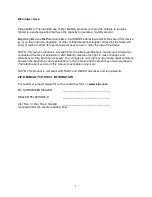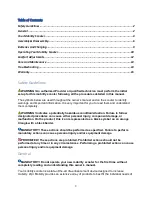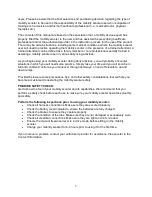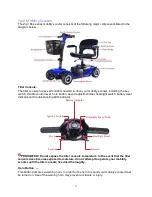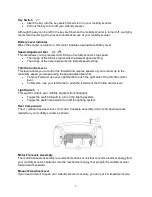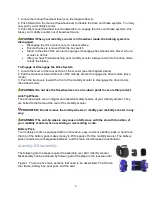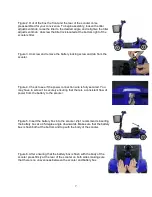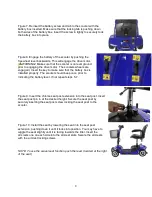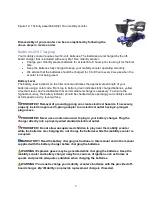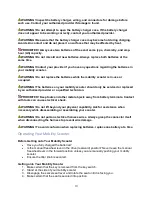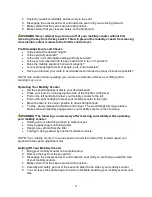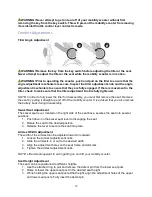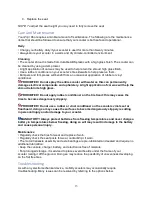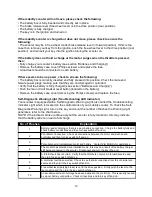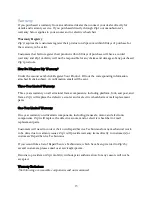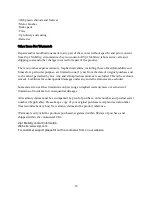
14
If the mobility scooter will not move, please check the following:
• The battery box is fully inserted and correctly set in place.
• The brake release lever (free wheel lever) is in the drive positio
n (rear position).
• The battery is fully charged.
• The key is in the ignition and turned on.
If the mobility scooter is charged but does not move, please check to ensure the
following:
• The scooter may be in free wheel mode (brake release lever in
forward position). If this is the
case then remove your key from the ignition, push the free-wheel lever to the drive position (rear
position), and reinsert your key into the ignition turning the scooter on.
If the battery does not hold a charge or the motor surges when the throttle is pressed,
then:
• Fully charge your scooter’s battery (see section “Batteries and Charging”).
• Remove the battery case cover (Philips screws) and replace the fuse.
• A load test should be conducted on each battery.
If there seems to be no power, check to ensure the following:
• The battery box is correctly inserted and fully pressed into position. Check the male and
female power plugs, making sure that they are not damaged or corroded.
• Verify that the battery is fully charged (see section “Batteries and Charging”).
• Push the main circuit breaker reset button (located on the battery).
• Remove the battery case cover (removing the Philips screws) and replace the fuse.
Self-Diagnostic Warning Light (Troubleshooting LED Indicator)
Your scooter is equipped with a Self-Diagnostic Warning Light, also called the Troubleshooting
Indicator Light which is located on the control stack of your mobility scooter. To check the Self-
Diagnostic Warning Light, turn on the key and count the number of flashes the Warning Light
generates, refer to the chart below.
NOTE: If the indicator blinks continuously but the scooter is fully functional, this may indicate
that the battery will soon need a full charge.
No. of Flashes
Explanation
1
Battery needs charging or there is a poor battery connection. Charge the battery fully and
check battery connections and then turn key switch off and on.
2
Poor Motor Connection. Check all connections between the motor and dash board
controller and then turn key switch off and on.
3
Potential short circuit between motor and battery. Contact Zipr Mobility for assistance.
6
The scooter has entered drive inhibited mode, this may be a result of the battery charger
still being connected to the scooter. Disconnect and turn the key off an on.
7
A throttle fault has occurred. Verify that the throttle is not stuck in forward/reverse and
then turn the key switch off and on.
8
A controller fault has occurred. Check to see that all connections from the controller are
secure and then turn the key switch off and on.
9
Free wheel lever (parking brake) is not in the drive position. Firmly push the lever to the
rear position and then turn the key switch off and on.
10
An excessive amount of voltage has been applied to the controller. This is usually caused
by a poor battery connection. Check connections and turn key off and on.
Summary of Contents for Roo 3
Page 1: ......


